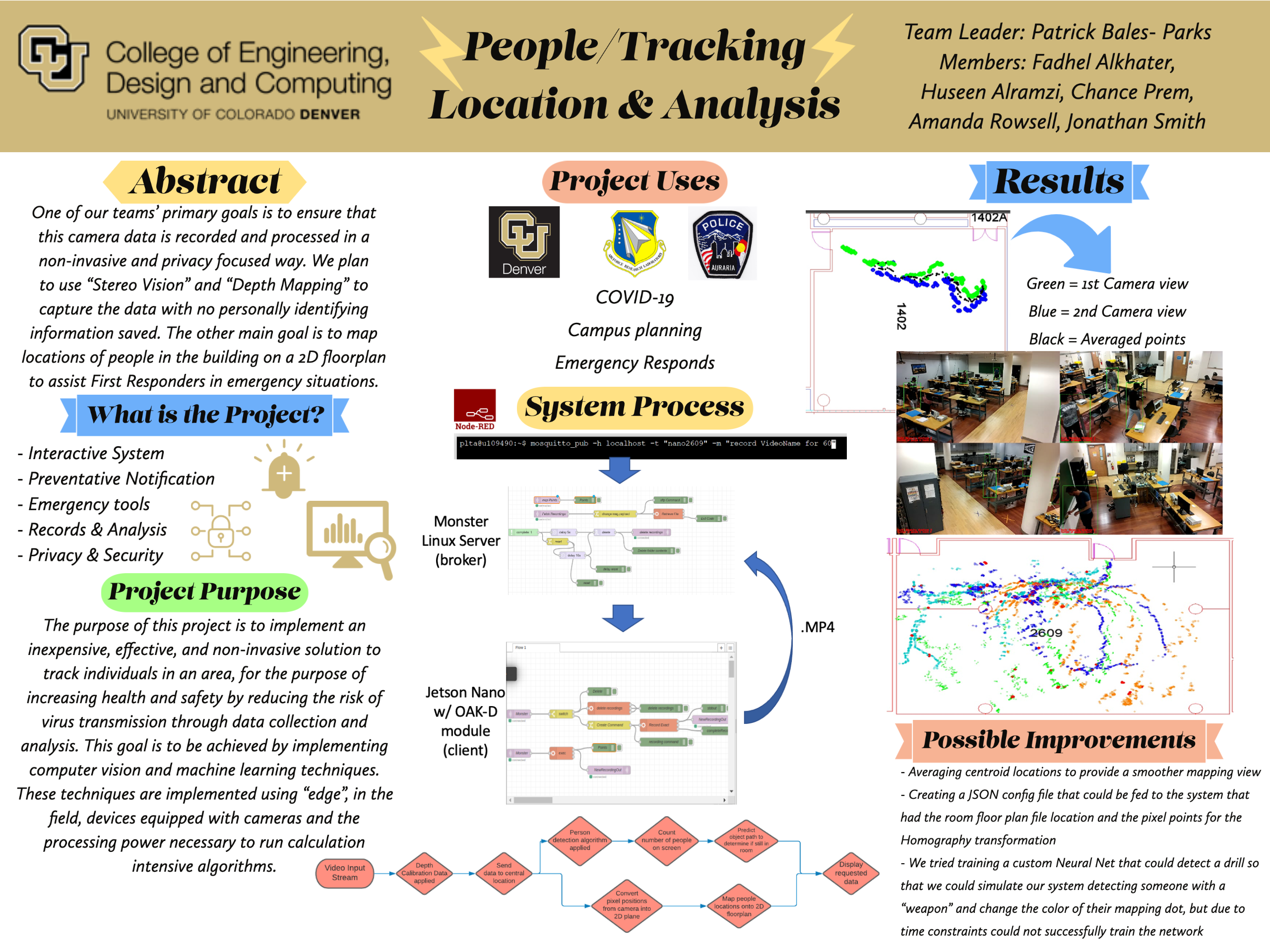People Tracking Location and Analysis
Department of Electrical Engineering
Project Abstract
With the prevalence of the COVID-19 virus in the United States, universities and other organizations are attempting to minimize the risk of transmission in order to provide a safe environment for their occupants. Several precautions have been implemented to assist in this initiative, such as social distancing and mandatory face coverings, but other preventative measures can be taken to further limit exposure to the virus. In order to implement these safety precautions like room/building occupancy limits and one-way pedestrian paths, large amounts of data must be collected and analyzed.
The purpose of this project is to implement an inexpensive, effective, and non-invasive solution to track individuals in an area, for the purpose of increasing health and safety by reducing the risk of virus transmission through data collection and analysis. This goal is to be achieved by implementing computer vision and machine learning techniques. These techniques are implemented using “edge”, in the field, devices equipped with cameras and the processing power necessary to run calculation intensive algorithms.
These devices will observe foot traffic patterns, social distancing compliance, and the real-time count of people within defined areas of interest. This paper details the design process. from problem statement definition to initial prototype testing and our team’s future design plans.
